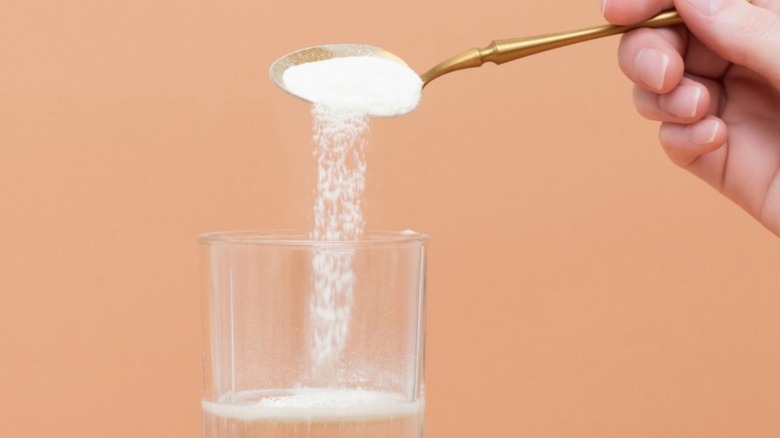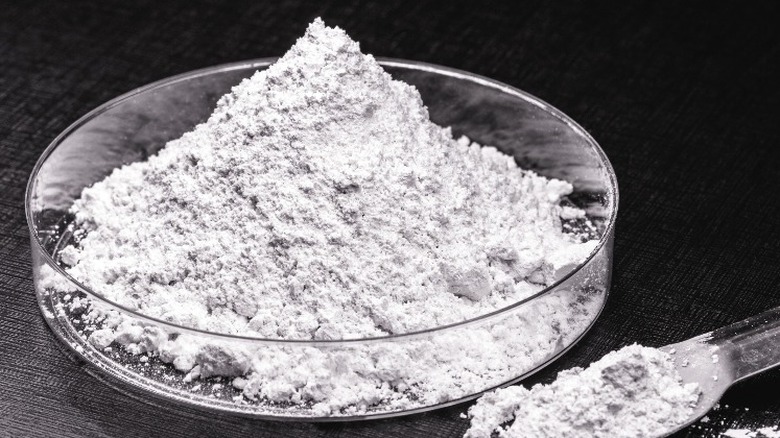The Sandy Ingredient Commonly Added To Powdery Foods
When standing in the grocery store aisle and perusing the ingredient lists of your potential purchases, it's not uncommon to feel like you're reading another language. Everything from meat, to produce, to dairy, seems to have some kind of additive included in its ingredients. According to Healthline, those additives exist to preserve the color and appearance, as well as to delay the expiration of the item.
The health effects of these common food additives vary widely, WebMD reports. Scientists have linked food coloring — one of the most common additives in the food we buy today — to "hyperactivity in children," but it's considered safe by the Federal Drug Administration. Experts also argue that high fructose corn syrup, another common additive, can increase the risk of type 2 diabetes.
Although these food additions are considered safe, it's important to know what you're ingesting. One particular additive is naturally occurring in our bodies, which has led experts to question how much is too much, per Healthline.
Silica is safe, natural, and widely available
Sometimes, the ingredients in the food we eat are difficult to pronounce and have an ambiguous function. One common additive you should know, silicon dioxide, occurs naturally in the human body. It simultaneously acts as a key anti-clumping agent in powdery foods, according to Healthline. Silicon and oxygen comprise the sand-like substance — also known as silica — which appears organically in plants and animals. Plus, this powder composes 59% of the earth's crust. That means the sand you see on the earth's beaches is essentially the same substance that exists to keep your protein powder from becoming a chunky mess, per Livestrong.
Because silicon dioxide is so prevalent in the world, it can be easy to assume that there's no limit to the amount humans can consume. The substance is safe for consumption and gets flushed out of the human body by the kidneys. However, the Food and Drug Administration has said that silicon dioxide should not exceed 2% of an item's weight.

